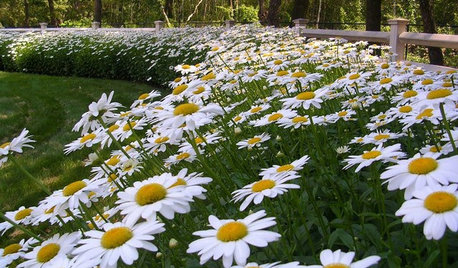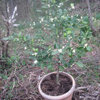Two fertilizer questions....
Travis in PHX (9b)
3 years ago
Featured Answer
Sort by:Oldest
Comments (34)
Ken B Zone 7
3 years agoRelated Discussions
how different are these two fertilizers?
Comments (5)1. yes 2. that's why you need to know the nutrient needs of the various plants you are growing. Or at least the needs of the basic classes of vegetables - root crops, fruiting crops, and leafy green crops. Then you have to factor in the soil condition and nutrient levels and the method of growing (in ground or in containers). An old garden adage has more than a grain of truth in it. "N for shoots, P and K for blooms and roots." 3. no Dave This post was edited by digdirt on Thu, Jun 27, 13 at 14:55...See MoreFertilizing St. Augustine with two different fertilizers?
Comments (2)Here are some general guidelines for fertilizing. 1. Don't use weed n feed products. If you have weeds, then fertilize first with plain fertilizer and come back in two weeks to spot spray individual weeds with something like weed-b-gone. WNF products sound ideal but they don't work like they promise to work. You are much better off using fertilizer when you need fertilizer and separate weed control when you need weed control. 2a. With chemical fertilizers, fertilize once in the spring and twice in the fall. In the spring wait until after you have mowed real grass for the second time. That will ensure you are not fertilizing the early weeds. 2b. With organic fertilizers, you can fertilize any day of the year or every day of the year. Just don't smother the grass with it. Apply most of them at a rate of 10-20 pounds per 1,000 square feet. Ordinary corn meal, alfalfa pellets, soy bean meal, and cottonseed meal are typical organic fertilizers that can be found in 50-pound bags at any feed store. If you want to speed up your lawn's image but feel frustrated that you should not use more chemicals now, then use organic fertilizers from now until Labor Day. Then you can do the first app of chemical fert and again on Thanksgiving. You can apply both chemical and organic on the same day if you want. They do not interact with each other. Now here is the basic 123 of lawn care. Water deeply and infrequently. Deeply means at least an hour in every zone, all at once. Infrequently means monthly during the cool months and no more than weekly during the hottest part of summer. If your grass looks dry before the month/week is up, water longer next time. Deep watering grows deep, drought resistant roots. Infrequent watering allows the top layer of soil to dry completely which kills off many shallow rooted weeds. Mulch mow at the highest setting on your mower. Most grasses are the most dense when mowed tall. Bermuda, centipede, and bent grasses are the most dense when mowed at the lowest setting on your mower. Dense grass shades out weeds and uses less water when tall. Dense grass feeds the deep roots you're developing in 1 above. Fertilize regularly. I fertilize 4 times per year using organic fertilizer. Which fertilizer you use is much less important than numbers 1 and 2 above....See MorePhalaenopsis: Fertilize or not to fertilize that is the question
Comments (2)Right now light doesn't matter. You can put it wherever you want to display the plant while its In bloom. Congratulations! I would advise against fertilizing at this point. You might think of nitrogen as the anti blooming chemical. In many plants, not just orchids, excess nitrogen will prevent blooming or at least dramatically reduce it. Wait until you see your plant in active growth making new roots and leaves to start fertilizing....See MoreIs It A Good Idea To Use Two Fertilizers Together?
Comments (6)I suppose like everything else a fertiliser program is influenced by where you are and zone6 might have different "rules" to here. It is the old when in Rome thing. What might be appropriate here might not be appropriate in zone 6 USA. Then there is the bloom booster thingo. What do you do in a mixed up collection when there are orchids in various states of growth? I cannot be bothered watering this one with bloom booster and that one with non bloom booster. Anyway, your question is simplified if you only have three Phals. At this time of year in the Northern Hemisphere in zone 6 maybe you should be using the low Nitrogen formula....See Moreponcirusguy6b452xx
3 years agoSilica
3 years agoTravis in PHX (9b)
3 years agobonsai_citrus_and_indoor_gardening
3 years agoTravis in PHX (9b)
3 years agoMeyermike(Zone 6a Ma.)
3 years agolast modified: 3 years agogardengal48 (PNW Z8/9)
3 years agoUser
3 years agoTravis in PHX (9b)
3 years agoUser
3 years agolast modified: 3 years agoPatti Chicago Zone 5b/6a
3 years agoVladimir (Zone 5b Massachusetts)
3 years agoSilica
3 years agoUser
3 years agoTravis in PHX (9b)
3 years agoUser
3 years agoUser
3 years agoMeyermike(Zone 6a Ma.)
3 years agoTravis in PHX (9b)
3 years agoSilica
3 years agoUser
3 years agolast modified: 3 years agoTravis in PHX (9b)
3 years agoUser
3 years agoMeyermike(Zone 6a Ma.)
3 years agolast modified: 3 years agoTravis in PHX (9b)
3 years agoUser
3 years agoMeyermike(Zone 6a Ma.)
2 years agoTravis in PHX (9b)
2 years agoTravis in PHX (9b)
2 years agoMeyermike(Zone 6a Ma.)
2 years agoTravis in PHX (9b)
2 years agoMeyermike(Zone 6a Ma.)
2 years ago
Related Stories

GARDENING GUIDESGet on a Composting Kick (Hello, Free Fertilizer!)
Quit shelling out for pricey substitutes that aren’t even as good. Here’s how to give your soil the best while lightening your trash load
Full Story
DESIGNING A BUSINESS2 More Questions Designers Should Ask About Gaining New Skills
A design coach proposes two ways designers can consider the value of education, credentialing and trade membership
Full Story0

DESIGNING A BUSINESS2 Key Questions Designers Should Ask About Building Their Skills
A design coach provides a framework for thinking about which education and credentialing options make the most sense
Full Story0

GARDENING GUIDESMix or Mass Daisies for Two Great Garden Looks
The classic daisy looks equally beautiful massed in borders or mixed throughout a naturalistic planting. Which look suits your style?
Full Story

WORKING WITH PROS11 Questions to Ask an Architect or a Building Designer
Before you make your hiring decision, ask these questions to find the right home design pro for your project
Full Story
SELLING YOUR HOUSE15 Questions to Ask When Interviewing a Real Estate Agent
Here’s what you should find out before selecting an agent to sell your home
Full Story
LANDSCAPE DESIGN10 Questions to Ask a Landscape Designer
Discover how to choose the best designer for your yard and avoid surprises down the line
Full Story
DOORS5 Questions to Ask Before Installing a Barn Door
Find out whether that barn door you love is the right solution for your space
Full Story
KITCHEN DESIGN7 Tricky Questions to Ask When Planning Your New Kitchen
Addressing these details will ensure a smoother project with personalized style
Full Story





Silica